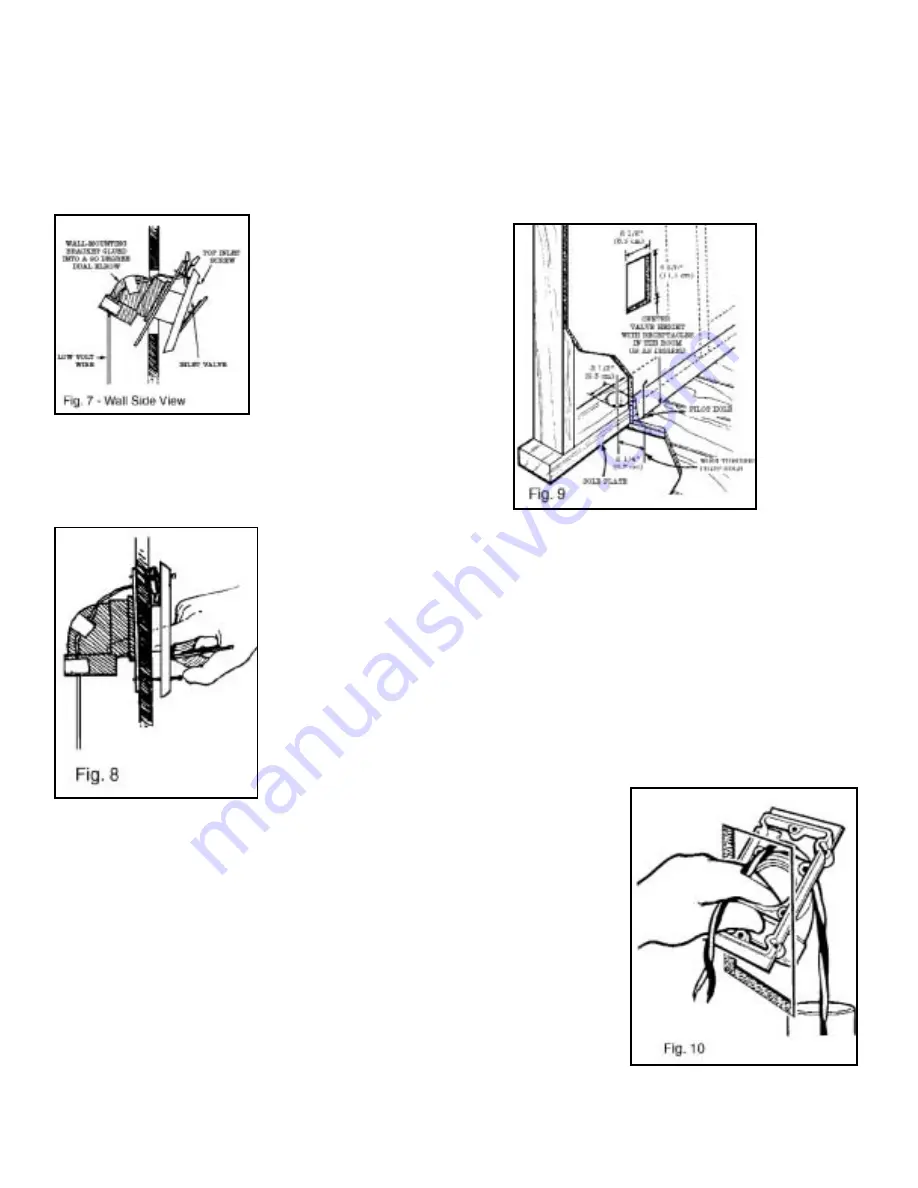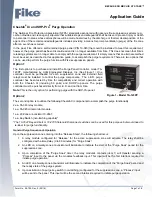
insert assembled 90 degree dual elbow and
wall-bracket assembly through wall cutout hole
as illustrated (Fig. 7).
Once metal mount-
ing bracket is com-
pletely inside wall
cavity, slide the
entire assembly
upwards so metal
plate is flush with
inner wall surface
and inlet valve is
flush with outer wall
surface. You can
insert index finger
through inlet valve opening and gently squeeze
inlet valve stem further into inner wall assembly
(Fig. 8).
NOTE: Mount inlet
valve so lid pulls
down to open.
Now, insert and
partially tighten
bottom\Inlet valve
screw. Tuck low-
voltage wires and
connectors under
sides of wall inlet
valve. Adjust inlet
valve for perfect
vertical alignment
and tighten both
inlet valve mounting screws. Be sure the inlet
valve lid operates freely. Apply glue to an ade-
quate length of tubing and aim it upwards
through the hole and into the 90 degree dual
elbow fitting on the back of the mounting plate.
Join this branch line to the trunk line using a 90
degree sweep tee.
If the inlet valve is to be serviced from the attic,
shorter pieces of tubing joined by couplings
may be required due to overhead space restric-
tions. Precut these pieces and work quickly to
prevent the cement on the end of the tubing
from drying before it reaches the fitting at the
valve below.
c) Using PLASTIC Stud-Mounting
Bracket
Having determined the location is suitable, cut
a 2- 1/2" (6.35cm) x 4-3/8" (11cm) hole in the
wall at the
desired inlet
valve loca-
tion (See Fig.
9).
Now cut or
break off
“new con-
s t r u c t i o n ”
section from
plastic wall
m o u n t i n g
b r a c k e t .
Tape low-
voltage wire
to the end of a sufficiently long piece of tubing
and pass it up from beneath. If the trunk line is
in the attic, tie a weight to the end of the low-
voltage wire and lower it through the opening.
Remove the wire and pass it through the upper
hole in the trimmed mounting plate. Bare an
inch of both wire leads and wrap them around
the lugs on the back of the valve in a clockwise
direction. Tighten the lugs with a Phillips screw-
driver.
Apply cement to the flange on the back of the
mounting plate
and attach a
90 degree
dual elbow fit-
ting oriented in
the appropri-
ate direction.
Tilt the mount-
ing plate for-
ward and
angle it into
the hole in the
wall. Center
the mounting
plate in the
hole and pull
outward (See Fig. 10).




























